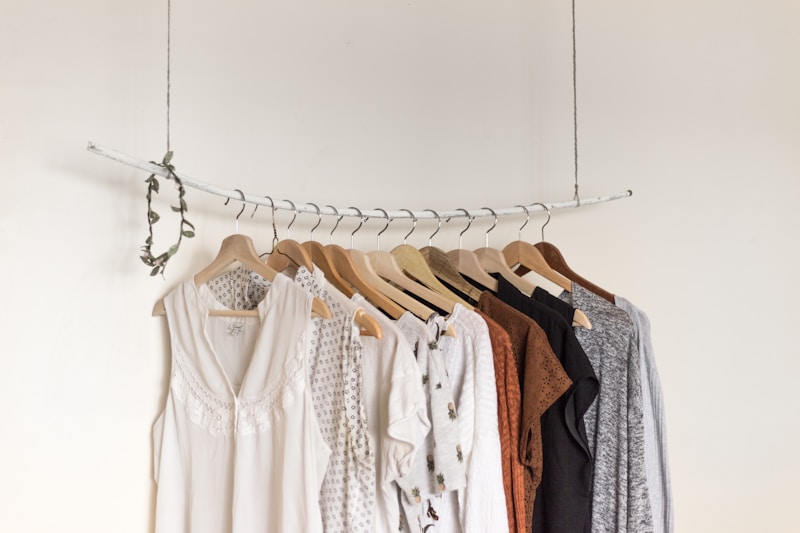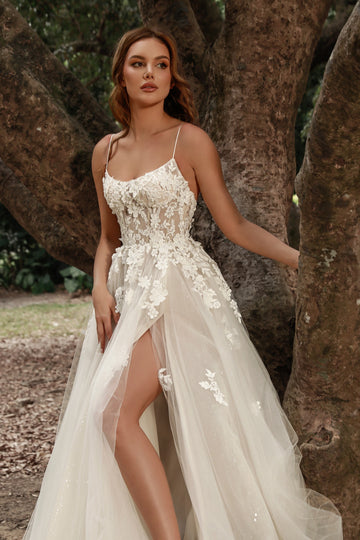Bridal Fashion and Environmental Responsibility: A New Era in Wedding Trends
Bridal Fashion and Environmental Responsibility: A New Era in Wedding Trends
As weddings evolve to reflect modern values, bridal fashion has started to embrace a more ethical approach. Today, brides are increasingly considering sustainability along with aesthetics in their wedding outfits. This article explores the intersection of bridal fashion and environmental responsibility, focusing on sustainable practices, eco-friendly materials, and the top trends to expect in this transformative sector.
Understanding Sustainable Bridal Fashion
Sustainable bridal fashion refers to wedding attire that is produced with minimal impact on the environment. This involves using eco-friendly fabrics, ensuring ethical labor practices, and promoting recycling or upcycling initiatives. By choosing sustainable options, brides not only look beautiful on their special day but also contribute to a healthier planet.
The Importance of Sustainability in Bridal Fashion
The fashion industry is one of the most polluting industries globally, with wedding gowns often made from non-biodegradable materials. Each year, millions of tons of textiles end up in landfills, creating a significant environmental burden. The rise in awareness of this issue has led to a strong demand for sustainable bridal options.
| Key Benefits of Choosing Sustainable Bridal Fashion |
| 1. Reduced Environmental Impact |
| 2. Support for Local Artisans |
| 3. Unique and Customizable Options |
| 4. Long-lasting and High-Quality Materials |
Key Eco-Friendly Materials in Bridal Fashion
When it comes to sustainable bridal wear, the choice of materials plays a crucial role. Some of the most popular eco-friendly fabrics include:
- Organic Cotton: Grown without harmful pesticides, organic cotton is not only soft but also biodegradable.
- Hemp: A highly sustainable fabric that requires little water and grows rapidly. Hemp is durable and becomes softer with each wash.
- Bamboo: Known for its antimicrobial properties, bamboo is a fast-growing plant that can be transformed into luxurious fabric.
- Recycled Polyester: Made from post-consumer waste, recycled polyester reduces the need for virgin materials and minimizes waste.
Fashion Designers Leading the Way
Some bridal designers are pioneering sustainable practices in the industry, creating stunning gowns without the environmental footprint. Notable names include:
- Reformation: This brand is focused on sustainability, offering an array of stylish bridal dresses made from eco-friendly materials.
- Grace Loves Lace: Known for their bohemian and vintage-inspired designs, they prioritize ethical manufacturing and use sustainable fabrics.
- BHLDN: A part of Anthropologie, BHLDN offers vintage-inspired dresses with a commitment to sustainability.

Emerging Trends in Sustainable Bridal Fashion
As the world of fashion progresses, various trends are emerging that harmonize bridal fashion with environmental responsibility. Here are some key trends to watch:
- Rental Services: Brides are increasingly opting for rental services to wear designer dresses for their wedding day, reducing waste and costs.
- Custom and Upcycled Designs: More designers are creating bespoke garments from vintage or upcycled materials, offering unique pieces that tell a story.
- Minimalist Aesthetics: Simple, elegant designs are gaining popularity, allowing brides to focus on quality rather than quantity.
- Green Weddings: Beyond the dress, many couples are opting for eco-friendly weddings, from décor to catering, aligning their entire celebration with sustainable values.
Global Influence of Environmental Responsibility in Bridal Fashion
Different regions are showcasing how cultural practices are integrating sustainability in bridal fashion. For example:
- Scandinavian Countries: Known for their strong commitment to environmental wellbeing, many Scandinavian wedding brands now emphasize eco-friendly materials and local craftsmanship.
- India: The resurgence of traditional techniques, such as handloom weaving and block printing, aligns with sustainable practices while producing beautiful bridal attire.
- North America: Many North American retailers are moving towards eco-conscious collections, reflecting consumer demand for greener options.
Challenges and Considerations
While the shift to sustainable bridal fashion is encouraging, it is not without its challenges. Here are some factors to consider:
- Price Points: Sustainable bridal wear can sometimes be more expensive due to the quality of materials and ethical manufacturing processes.
- Lack of Awareness: Many brides are still unaware of sustainable options available to them, highlighting the need for education within the industry.
- Availability: Sustainable designers may not have the same visibility as traditional brands, making it harder for brides to find them.
Looking Ahead: Future of Bridal Fashion
The future of bridal fashion is bright and filled with potential as more designers, brands, and consumers embrace sustainability. As this movement grows, we can expect:
- Increased transparency in production and sourcing practices.
- Innovation in sustainable materials and techniques.
- A rise in collaborative initiatives focused on reducing waste within the industry.
Conclusion
Bridal fashion and environmental responsibility are no longer mutually exclusive concepts. As more brides seek a meaningful and eco-conscious way to celebrate their love, the industry responds by integrating sustainable practices at every level. Choosing bridal wear that respects the environment not only enhances the beauty of the event but also fosters a sense of responsibility for our planet. As you plan your wedding, consider opting for sustainable options that not only make you feel beautiful but also contribute to a better world. Together, we can pave the way for a greener future in bridal fashion.
Final Thoughts: When considering bridal fashion, always research the brands and designers you are interested in. Look for certifications and transparency about their production methods. Opt for timeless designs that you can cherish for years to come, and remember that choosing sustainable fashion doesn't mean sacrificing style; it means elevating it responsibly.
